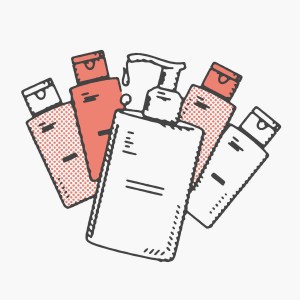Mistletoe is a rather tenacious parasite so wresting it from a tree trunk can be difficult. Yet I relish that slightly hazardous Christmas Eve task – usually with my sister leading the charge, Niwaki shears in hand. By this point in December, even the most verdant bits of festive greenery in our home will have lost some of their freshness and need an injection of glossy foliage. Our bosky hunting ground of choice is a Cambridge college’s orchard of gnarled and stooping apple trees. We’re quite sure that the gardeners won’t mind us giving their holly bushes a light pruning (though I admit that there’s a thrill in walking home with a sack of spiky, possibly illicit branches).
At the table, the leafy haul becomes a wild, unruly centrepiece for supper. It’s a rather Dickensian affair in my house, with candles burning and general merriment, but on Christmas Eve I stop short of preparing a big meal. The night before the big day is about bowls of soup, glasses of ice-cold fizz, smoked salmon sourced from Jollys of Orkney and the umami-rich (as well as hilariously named) Gentleman’s Relish, coupled with Stilton and pickled walnuts. When else will you find the time to truly savour a perfectly ripe persimmon or a clementine, with its leaves still clinging to the stalk?

Rushing to catch up on your wrapping, hurrying to the shops in search of the perfect ribbon – it has become a tradition to dash about on Christmas Eve. That final lap of a department store before closing time can feel like an Olympic pentathlon. For me, real branches are an antidote to the final burst of commerce that defines this time of year. What is it about the contours of a tree that remind me that Christmas is as old as the hills? Evergreens call to mind the resurgence of life at the moment of winter solstice, of Yule and the mysterious tradition of English orchard wassailing (singing to wake up trees). They make me think of Naturchläuse in Alpine spots such as Appenzell, where people dress up in costumes of moss, pine cones and fir branches to drive away winter.
Festooning your home with real greenery is worth the effort. To my table display, I like to add some deep-red amaryllis and berries. Their hit of colour contrasts with the white linen tablecloth, soon to be stained by glasses of barolo – as well as the imprint of long conversations and songs, which are always unique to each year. There’s a subliminal urge to bring fresh flowers to a table. The perishable nature of blooms and the fact that glossy cuts of holly are only here for a fleeting period help us see that the moment that matters is now. They announce, “Savour us before we wilt.”
These occasions when tables are laden with produce and promise also remind me of Dutch 17th-century depictions of edible delights. On a recent trip to the Museo del Prado in Madrid, I discovered Clara Peeters’ “Still Life with Flowers, a Silver-Gilt Goblet, Dried Fruit, Sweetmeats, Breadsticks, Wine and a Pewter Pitcher”. It shows a table heavy with food, rendered with glistening, almost photorealist clarity, even though it was painted in 1611. Peeters and her contemporaries, such as Osias Beert the Elder, were hooked on capturing the essence of a moment. With its sense of anticipation for a night of revelry, it’s a scene that still packs a punch.
Sophie Grove is the editor of ‘Konfekt’. Pick up the winter issue today – it’s full of snowy forays, recipes and ideas for the season.
Savvy architects in the Swiss Alps are carefully positioning residences to make the most of striking lake and mountain vistas. As a result, many of these buildings are imbued with a strong sense of place and connection to the wider environment, despite many being cosy winter hideaways, where owners and guests spend their time indoors. Monocle hit the slopes to visit a selection of holiday homes that are making the most of a prime position in the Swiss countryside.
1.
GSTAAD
Chalet Saanen Gstaad

French architect and designer Thierry Lemaire is known for his angular furniture and impressive portfolio of high-end interiors, which includes a renovation of the Elysee presidential office. His latest project, however, is a little more personal. In the Swiss town of Gstaad, Lemaire teamed up with his sister, interior designer Sophie Prezioso, to renovate and redesign a chalet that she purchased as a holiday home. Lemaire looked after the furniture and architecture, and worked hand in hand with Prezioso on interior design and decoration.
The 16th-century building was originally a farmhousf and the pair wanted to keep its rustic character while introducing contemporary design elements. They remodelled the interior to introduce more natural light. Partitions were removed to create more space for the dining area, while the old barn on the first floor became the main bedroom. “It was important to ensure that the space was comfortable and welcoming,” says Lemaire.


The architect wanted to create “”a cosy and timeless environment”. To do so, he chose materials and furniture in contrasting styles and textures. Rough meleze wood and smooth Hainaut stone was used throughout, while old paintings and vintage furniture mix with more modern pieces; one of the architect’s Koumac armchairs is placed beside a large window, creating a relaxing spot to enjoy views of the snowy landscape.
The result? An Alpine holiday home that feels contemporary but still reflects the original qualities of the building. “It’s a house that is somewhere between elegance, authenticity and preciousness,” says Lemaire.
thierry-lemaire.fr
2.
SCHIERTSCH
Aux Losanges

In February, the mountain village of Tschiertschen will receive an influx of art enthusiasts. An exhibition of works by Swiss sculptor Hans Josephsohn will open at Aux Losanges, a residence that doubles as an arts venue. The strickbau was renovated by London and Zurich-based practice Caruso St John in 2017 and has been at the centre of the village’s cultural life since the mid-20th century. Built as a home in 1869, the structure served as a restaurant (known as Cafe Engi), exhibition and concert space.
Its future hung in the balance until Zurich-based couple Armin Zink and Stephane Lombardi, who used to visit Cafe Engi after hikes, purchased the property in 2015. A plan to turn it into a holiday home changed when the town’s mayor suggested they give it a “public dimension”. “It set Zink and 4 Lombardi’s imaginations alight,” says architect Adam Caruso. “So we created a house that works like a turn-of-the-century salon: it is a private residence but there are concerts and exhibitions where some of the interiors become accessible to the public.”

At the heart of the public areas is a double-height foyer with a concert grand piano and panoramic windows. Guests can choose from one of five large bedrooms – each with a distinct identity – that are complemented by four common rooms. The architects also designed built-in beds and cupboards, which were inspired by the traditional painted furniture of Swiss farmhouses. “By containing a diverse set of interiors and atmospheres, the house is a world in itself,” says Caruso.
aux-losanges. ch
3.
LAKE BLAUSEE
Blausee Treehouses

The first thing that strikes you about the small Alpine lake of Blausee is the vibrant colour of its azure waters. “It’s a trick of the light,” says Stefan Linder, who co-owns the lake and the surrounding nine hectares of land. “The colour is created by the sun reflecting against the forest on this side of the mountain. It refracts against the bottom of the lake and creates this amazing blue.” It’s about as postcard perfect as Swiss scenery gets; a crystalline pool surrounded by mossy green boulders and lush pine forests that sprawl up the towering mountain peaks encircling the lake.
Blausee’s picturesque qualities have been attracting visitors from around the world to this corner of the Bernese Oberland for more than a century. The land was purchased in 1878 by Swiss businessman Johann Caspar Leemann-Boller, who built a hotel on the lake’s shore and added an alpine freshwater trout farm a few years later. Both are still running; the latter is Switzerland’s oldest producer of freshwater trout and regularly named the country’s finest in taste tests.

Eight years ago the previous owner was on the search for a buyer. “He was 72 years old and there was nobody in line to take over after he retired,” says Linder. “He asked me to find a solution because there were various interested foreign buyers but he was keen that it stay in Swiss hands.”
Linder teamed up with fellow entrepreneurs Andre Luthi and Philipp Hildebrand to buy Blausee. The lake remains one of only a handful of the 1,500 in Switzerland that is privately owned. Visitors can enter the surrounding park if they pay a small fee, which is put towards maintaining the land and its walking trails. Linder has overseen the introduction of a handful of new structures to the park over recent years, including a small lakeside cafe and shingle-roofed lake house that was designed by Zurich-based architect Thomas Hildebrand. This year the latest addition to Blausee was unveiled; three wooden cabins hidden within a dense thicket of trees that adjoins the hotel. Each cabin can be hired in its entirety by guests who are looking for an experience that will immerse them in the natural landscape.

Hildebrand is also behind these new structures. Each has vast, floor-to-ceiling windows looking out onto the surrounding woodland and, once the leaves have fallen, the mountainsides beyond. “What’s really special is how the views change according to the season,” says Hildebrand, who positioned the cabins to optimise their outlooks. Connecting their inhabitants with Blausee’s spectacular natural landscape was the architect’s main priority when working on the project. “”Our daily lives keep moving further and further away from nature and that has created a real longing for it. I wanted to tap into that.”
For inspiration, Hildebrand drew heavily from his time in Japan. “My partner is half Japanese so we usually go there every year,” he says. “Japanese people have a really spiritual way of connecting to nature and their homes have a more symbiotic relationship to the natural world. In Switzerland, our relationship to nature is more pragmatic. So I wanted to combine those two sensibilities.”
The buildings were constructed using locally felled pine wood, which also forms the interior and exterior cladding. For the bathrooms and flooring, Hildebrand opted for the same stone that makes up the mountainsides surrounding the cabins: a deep grey Mitholzer-K.ieselkalk limestone sourced from a quarry located a few kilometres up the valley. The cabins were decorated by Danish-Swiss interior designer Ruth Kramer, who also runs the Briicke 49 hotel in the mountain village of Vals.

She chose the furnishings to complement the views, with a soothing shade of pale duck egg blue for the walls, slate grey and mossy green textiles and wooden furnishings from Denmark’s Carl Hansen & S0n and India’s Phantom Hands. The interiors are warmly lit by lamps from Santa & Cole and Michel Anastasiades, while a wood-burning stove in each cabin adds to the cosy atmosphere. “We wanted to create something calming and timeless,” says Kramer. “To allow people to unplug and give the feeling of being a bit off-grid.”
The cabins were prefabricated by woodworkers in the nearby town of Frutigen and took seven months to construct. Once the foundations were fully prepared, the modular elements were lowered onto the site using a helicopter and slotted together. “This is a really modern construction and wood has come really far with this kind of prefabrication,” says Hildebrand. “That is what I love about these kinds of projects: using local, traditional materials allows you to combine architectural progressiveness with heritage.”
blausee.ch
Read next: How do you design a warm and welcoming home? Villa Housu in Finnish Lapland has found the answer
Christmas television used to be a thing. It was when the heads of channels would splurge on buying the rights to air the latest James Bond film or play all 12 days of The Lord of the Rings in order. Schedules would be cleared of ordinary furniture and a hush would fall across the land as families gathered to bask in the warm glow of a unique broadcasting event. In the UK, the national grid would have to plan for huge surges of electrical demand when the nation boiled its kettles in the ad breaks or Frodo finally returned to the Shire in one piece.
Now we imagine a typical house as a cut-away diagram in which all personnel are squirrelled away in separate rooms, faces lit by individual streams. There’s Dad in the kitchen with a laptop, watching reruns of old Top Gear episodes courtesy of BBC iPlayer; on the sofa, Mum’s watching a Netflix drama on her tablet, earbuds in; upstairs, a pair of young teenagers are ghoulishly illuminated by TikTok’s attention-sucking algorithm, a phone for each of them. Presumably the spell might only be broken when a Deliveroo driver rings the doorbell.

You won’t be surprised to learn that figures for British viewers – a good representative for most mature TV markets – indicate that less than half of Gen Z would ever dream of watching television by switching one on. In the average two hours of screen viewing a day for 16 to 24 year-olds, more than three quarters of that time is spent on video-sharing platforms. So even streaming – getting what you want when you want it – doesn’t really cut it. On YouTube and TikTok you don’t really get to choose what you watch: stuff a bit like stuff you’ve already seen gets thrown at you and you can stick or twist. But is that a million miles from the linear TV through which you’ve caught yourself dumbly channel-hopping for decades?
There’s a case to be argued that Christmas TV – with its charming, pinball-random approach – is the canary in the come-back-to-the-schedules coal mine. This is that joyful time of the year when old-school television appears to have got on the sherries before lunch and continues to go rogue into the new year. There’s a warm, fuzzy feeling you get when you know that you can fire up the old Panasonic with your morning coffee and get chestnuts deep in The Muppet Christmas Carol before you’ve even thought of having a shower. Hold the ablutions further: Singin’ in the Rain is on after that. And surely someone in the scheduling department at Broadcasting House will be smirking at the possibility of viewers segueing from the sexy dilemmas suggested in Indecent Proposal (Christmas Eve, BBC2, 22.30) into the objectively less sexy Midnight Mass from Our Lady of the English Martyrs, Cambridge (Christmas Eve, BBC1, 23.50).
A good way to schedule TV, then, and even bring younger audiences into a more familial dynamic of multi-generational viewing might well be by channelling some of that anything-goes Christmas spirit into other times of the year. World Cups and Wimbledons exert a similar gravitational pull on the national imagination and schedules are adjusted accordingly. Slightly strange, unashamedly random seasonal scheduling might just be the gift that keeps on giving throughout the year. Like many things that come around at Christmas, the aesthetics are a little messy but everyone loves it just the same. Christmas TV? It still matters.
Robert Bound is a contributing editor at Monocle. For more opinion, analysis and insight, subscribe to Monocle today.
Read next: The best cultural releases from 2025: The most notable films, books and music
Every year, Jiyu Kokumin-sha – the publisher of contemporary-affairs glossary Gendai Yogo no Kiso Chishiki – takes stock of contemporary Japan via an annually updated encyclopaedia of the 10 most popular buzzwords of the year. The final line-up (whittled down from a longlist of 30) offers a fascinating snapshot of a year in Japan shaped by heat, inflation and political shift.
10. Myaku-Myaku
The mascot of Expo 2025 Osaka went from zero to hero during the course of the six-month event. Initially derided for his baffling blue-and-red appearance, Myaku-Myaku became the star of the show, shifting vast quantities of merch and providing the backdrop for endless selfies. The Expo itself defied gloomy predictions, intense summer heat and epic queues to pull in 25.5 million visitors and make a profit.

9. ‘Niki’
As Japan endured another record-breaking summer this year, there was much discussion about how the country’s distinctive seasons are becoming less defined. With longer summers and shorter winters, many fear that Japan’s famous four seasons (shiki) are blurring into two (niki).
8. ‘Toranpu kanzei’
The country was taken aback by the severity of Trump’s tariffs. Japan, which considers the US an ally, found itself treated as harshly as other nations and its auto industry in potential difficulty. In the end, the nation’s top trade negotiator Ryosei Akazawa’s repeated trips to Washington saw the final figure drop to a still-painful 15 per cent.
7. ‘Sen go 80-nen’ / ‘Showa 100-nen’
2025 was a big year for anniversaries: 80 years since the end of the Second World War and a century since the start of the Showa era – the longest imperial reign in the nation’s history and a distinctive period remembered for its astonishing economic growth and a golden age for design in everything from architecture to cars and interiors.
6. ‘Kokokomai’
Rice was an even hotter topic than Trump’s tariffs this year, as households watched the price of the crucial staple soar. The government attempted to bring costs down by releasing some of its stockpile from 2020 and 2021 harvests, which resulted in people talking about kokokomai or “very, very old rice”.
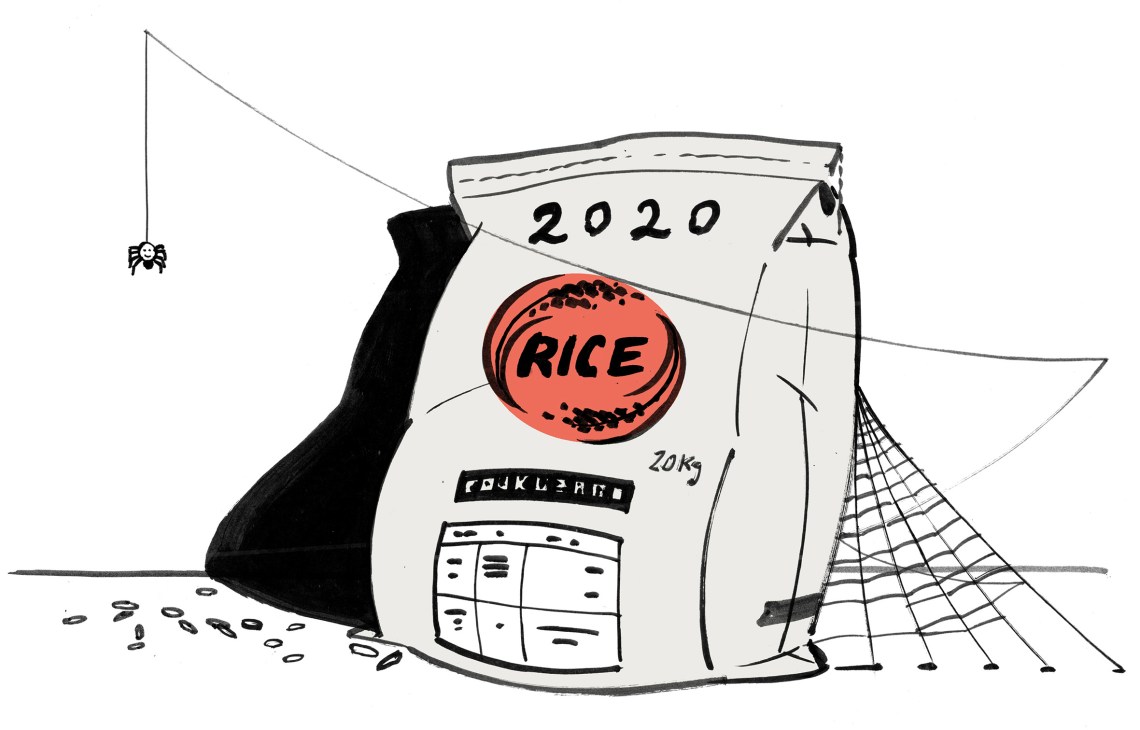
5. ‘Kokuho’
Japanese-Korean director Lee Sang-il’s lavish period drama about the world of kabuki theatre, Kokuho (National Treasure), paired two industry stars – Ryusei Yokohama and Ryo Yoshizawa – and became the highest-grossing Japanese live-action film of all time.
4. ‘Kinkyu juryo’ / ‘Kuma higai’
The phrases kinkyu juryo, meaning “emergency cull”, and kuma higai, or “damage caused by bears”, reflected the nation’s increased ursine threat this year. Bear attacks reached record highs, with more than a dozen people killed. Hungry bears were seen climbing persimmon trees and munching their way through valuable apple harvests, particularly in Akita prefecture, where the Self Defence Forces were called in to restore order.

3. ‘Orudo media’
While Japan tends to steer clear of the “fake news” culture war, there was a growing sense this year that young people were gathering information on social-media platforms rather than from orudo media (“old media”) outlets such as TV, radio and newspapers. A major sexual-harassment scandal at Fuji TV didn’t help.
2. ‘Ehho ehho’
This was a niche one. The phrase ehho ehho – meant to convey the sound of huffing and puffing – accompanied by a photo of a baby owl on the run, taken by Dutch photographer Hannie Heere, became a viral meme, used by anyone in a hurry or working hard.
The winner:
1. ‘Hataraite hataraite hataraite hataraite hataraite mairimasu’ / ‘Josei shusho’
Japan appointed its first female prime minister (josei shusho) in October after Sanae Takaichi was elected president of the ruling Liberal Democratic Party. With a minority government, a faltering economy and tricky regional geopolitics, Takaichi has a tough road ahead. Her plan, she said, was to throw work-life balance out the window and give it her all, announcing: “I will work, work, work, work and work” (Hataraite hataraite hataraite hataraite hataraite mairimasu). A spat with China early into the job hasn’t made life easier.
Here in Thailand, 2026 promises to begin with a bang. The country’s prime minister, Anutin Charnvirakul, who is currently in charge of a caretaker government, has called early elections even earlier than expected and February’s vote is likely to produce another cobbled-together coalition. Thailand’s prolonged political uncertainty – along with neighbouring Cambodia’s scam-centre economy and Myanmar’s ongoing civil war – leaves Vietnam and Malaysia as continental Southeast Asia’s standout performers.
Hanoi’s continued rise should come as no surprise but the buzz coming out of Kuala Lumpur is less expected. Malaysia’s prime minister, Anwar Ibrahim, has been exemplary on the world stage and is a strong contender for leader of the year. The economy is humming as overdue reforms are protested in public but praised in private by grateful business owners. One for foreign investors to watch, especially those who care about democratic values as well as dollars.
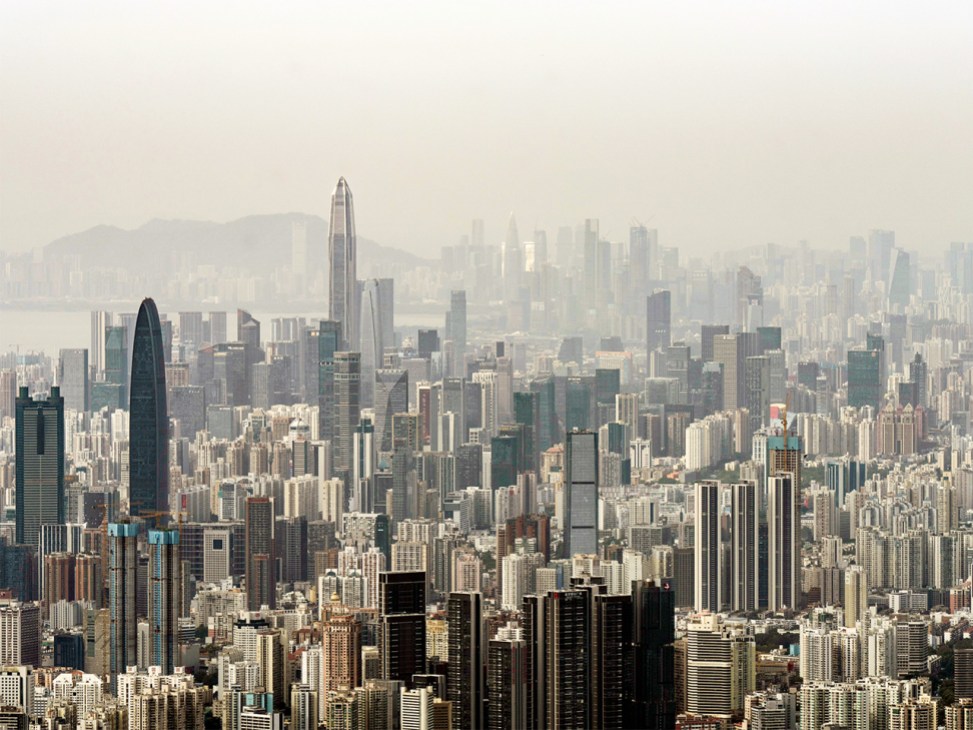
Across the water, the Philippines has taken over the rotating chairmanship of the Association of Southeast Nations. The country’s president, Ferdinand “Bongbong” Marcos Jr, has reinvigorated the US alliance, which should guarantee strong support from Washington over the coming year but could torpedo any hope of progress on issues requiring buy-in from China, especially on the South China Sea. As Marcos Jr’s six-year term enters its final third, mired in a corruption scandal not of his own making, more attention will shift to his friend-turned-foe Sara Duterte. The serving vice-president remains a favourite to move into Malacañang Palace in Metro Manila when the removal vans come for Marcos Jr in 2028, despite her father’s incarceration at The Hague and her own close call with impeachment.
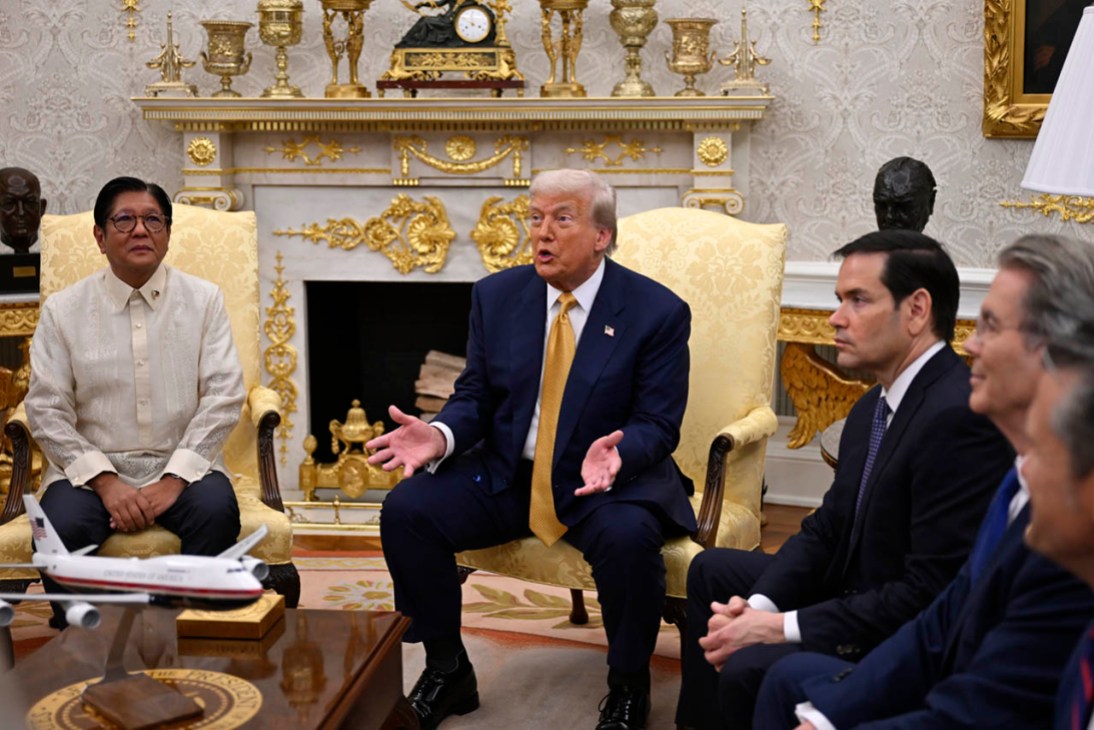
Senator Bam Aquino, the offspring of another former president, is being talked up as a contender by the centre-left. Meanwhile, I was impressed by the Filipino tourism minister, Christina Garcia Frasco, whom we interviewed for The Escapist. Frasco certainly sold me on the far north of the island of Luzon. (I’ll need to fit in a visit around my regular hops between Suvarnabhumi and Hong Kong.)
Speaking of my old patch, Hong Kong continues to defy the naysayers. Its stock market has reclaimed the global IPO crown and the special administrative region’s good fortune looks set to continue next year. Beijing clearly wants Hong Kong to succeed as its international gateway and the big financial-services firms are staffing up again. One of my favourite business stories of the year was about bankers completing their “tour of duty” to Singapore and returning to Hong Kong – surprise, surprise. One headline declared, “The next China is China.”
As India and Indonesia struggle with strongman rule, China’s one-party system marches ahead. The announcement of the next five-year plan in March will reveal which industries and technologies Beijing intends to focus on next. Meanwhile, a visit by Donald Trump in April (if it goes ahead) could result in outpourings of adoration, envy or rage – or a mix of all three. Monocle might even be in Shanghai at the same time. Watch this space.
For me, the real showstopper will come at the end of the year when China hosts the Asia-Pacific Economic Co-operation summit in Shenzhen. By now, most of us know the story of Shenzhen’s rise from a small fishing village on Hong Kong’s doorstep to a towering, technology-rich metropolis but it’ll be a rare opportunity for Western leaders to see it up close. I can already imagine Trump signing a hotel deal, playing a round of golf at Mission Hills and praising Deng Xiaoping as a visionary property developer. As we enter the second quarter of the Asian century, the East’s ascendancy and its leadership are becoming more apparent. And perhaps we should start calling it what it really is: China’s century.
James Chambers is Monocle’s Asia editor. Read about why he’s betting on Bangkok for the future of contemporary art here. Heading to Asia? Consult our online City Guides to Bangkok, Hong Kong, Kyoto and more. You’ll find them at monocle.com.
The Christmas drive up to the mountains has its traditions, rules and tunes. The original plan called for everything to be shipped up in advance on the train, while our journey would involve the cosy dining carriage on the Chur to St Moritz leg the day after for a gentle arrival in the Engadine. A schedule change (surprise! I am filing this column from Bahrain) required a speedy rethink on the transport and overall Christmas-logistics front. I devised a quick plan with my chief navigator and after a bit of tweaking here and there, we decided it would go something like this:
1.
Leave the Zürich staff Christmas party at a sensible hour.
2.
Wake up early Thursday morning to pack and be on the road by 08.00.
3.
Get to St Moritz by lunch, pick up the tree and do a round of grocery shopping.
4.
Leave mom in charge of the decorating and coniferous styling.
5.
Depart early Friday for Zürich and zip past the office before valeting the car at the airport with plenty of time to catch the Swiss flight to Dubai.
One thing that was missed from the pre-departure checklist was the Christmas playlist. Up until last year, Yuletide tunes were flawlessly transmitted via a tiny iPod. Yes, go ahead and have a good laugh at my lack of modernity and spending on new tech – but there was never a need for an upgrade until my microscopic music box went missing sometime in the spring. It is hardly the season to bore you or myself with the various reasons why I have not yet searched for a replacement (is that even possible?) or a more advanced upgrade. Rather, I’ll explain what happens when you need to keep the mood in the Land Cruiser seasonally perky and opt to improvise.
Everything would’ve been fine if modern vehicles still sported CD players but I was left to find Helene Fischer on Youtube. It pains me to even write this. No matter. I found Frau Fischer’s Weihnachts–Hits and off we went. We made it through 10 tracks before switching to Bublé. So far, so okay (Decathlon adverts aside). At about the same time that we turned off the highway for the climb up the mountain road, the playlist changed to something that Youtube claimed was from the 1940s. The first song sounded a bit familiar with all its frost, windowpanes, snowflakes and crackling. “Do I know this?” I asked my fellow passengers. “No, it’s not a classic,” said the navigator. Song two was a bit more swingy and for a moment I thought that I knew it but quickly realised that it wasn’t Dean Martin nor another Rat Packer. Song three sounded like song one but it was a female voice purring about the sax, vinyl, snowmen, crackling and windowpanes. Something was suddenly off. Would someone really reference vinyl in their lyrics circa 1947? “I think this is all AI rubbish,” I declared.
The navigator did some quick research and soon confirmed my hunch. “These songs seem to tick all the AI-generated boxes” he said. We swiftly found our way back to humanity but this little audio incident has been nagging me all the way to the Gulf. Aside from the annoyance of being momentarily duped, what concerns me is that such rubbish is so celebrated by analysts and investors the world over. “Everyone should have substantial AI investments in their portfolios,” said a tech sorceress on Bloomberg. Really? Really? The smart money should be investing in a jazz ensemble from Kyoto for Christmas 2026 and charging appropriately for an elegant little concert season. Till then, get off the playlists, put on some Perry Como and have a superb Christmas! Cheers.
Enjoying life in ‘The Faster Lane’? Click here to browse all of Tyler’s past columns.
In this moment of goodwill to all men (and ladies too, of course), you need to stay alert because, believe me, all sorts of mean shit is going down all around you. But fear not, because we’re here to keep you safe with our guide to spotting Christmas cheapskates, lazy gifters and passive-aggressive sleights.

They say: “This year we’re not giving gifts, instead we are donating the money that we would have spent to a donkey sanctuary.”
It means: they think all of their family are a bunch of asses, so they might as well just give the cash to the real deal.
They give you: a scented candle.
It means: they think that you’re super boring but probably have quite a nice house.
They give you: a panettone.
It means: they think that you’re super boring but at least you have a healthy appetite.
They sent you: a Christmas card that features their family wearing jolly jumpers and sporting beaming grins.
It means: they’re Americans. Or members of a European royal family. Or, they’re surely getting a divorce next year.
They say: this is the final Christmas card you’ll get from us.
It means: “We’re Danish.”*
They sent you: a digital Christmas card.
It means: “You’re dead to us.” Or also, from next year, “We’re Danish”.
They gave you: a Monocle subscription.
It means: you’re the cool cat in the family. And you can even read.
Your partner gave you: the first nice gift ever – and you’ve been together 20 years!
It means: he’s having an affair.
Your partner gave you: tea towels, a set of saucepans or a kettle.
It means: you should be having an affair.
All your business contacts sent you: boxes of chocolates.
It means: congratulations, you now live in Switzerland.
You received: a figurine of a man shitting with gusto.
It means: you have made an enemy this year. Or, congratulations you live in Barcelona.**
Your partner gave you: clothes that are at least one size too small.
It means: you’ll be Googling “weight-loss jabs” later today.
Your partner gave you: secateurs.
It means: can you do more around the garden?
Your partner gave you: saucy underwear.
It means: extra stuffing all round.
Belated Christmas card: arrives on December 24.
It means: they received yours several days ago and felt obliged to respond. Or, they have just about written you off.
Your partner promised to: take you to a Monocle conference in 2026.
It means: this one’s a keeper.
* It’s not that we’re implying that Danes are particularly cheap, rather that the country’s national postal service, PostNord, has announced that it will stop all letter deliveries at the end of this year because of falling demand – a collapse of 90 per cent since 2000.
** Catalans add the figure of a shitting man to nativity scenes. Known as El Caganer, he’s been popping up – and pooping out – for more than 200 years. His origins remain sketchy but, boy, is he loved.
To read more columns by Andrew Tuck, click here.
Here you’ll find 25 delightful gifts that balance utility, beauty and a sense of worldly curiosity. The list travels from Gothenburg and Seoul to Parisian caviar counters and Azorean vineyards, taking in books worth keeping, clothing designed for real life and objects that improve the home without shouting about it.
Some are modest, some indulgent and all are chosen with longevity in mind. Consider this your guide to Christmas shopping done properly – or a persuasive case for treating yourself.
11.
A copy of ‘The Monocle Book of Designers on Sofas’
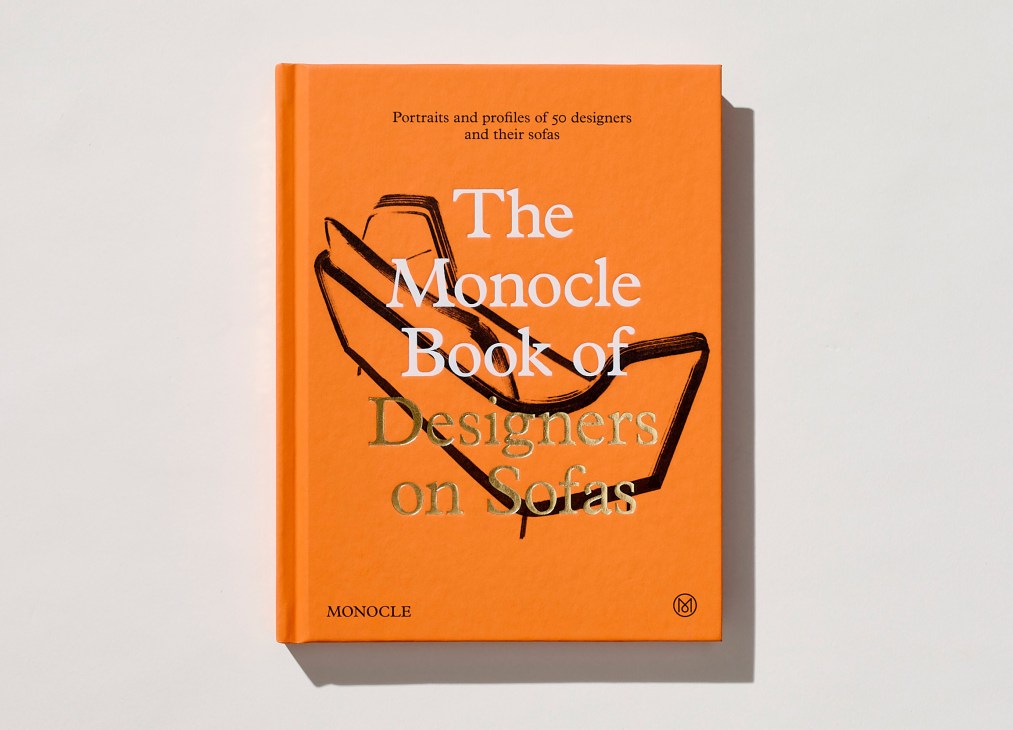
For 15 more Monocle-recommended book gifts, tap here
14.
Grippy sneakers from Gothenburg based Icebug to keep you from falling on your ass in Verbier

15.
A heavily accessorised purse from Belgian brand My Bob for a stylish conversation starter

Tap here for Monocle’s 12 recommended wines for Christmas
18.
Lyse Doucet’s new book ‘The Finest Hotel in Kabul’, which will stay with you and anyone you gift it to

19.
Notecards and pens from Penco to write polite notes to remind people to not use their speakers in public

Need even more ideas for your wish list? Monocle has curated a selection of 15 brilliant books to gift to the friend who has ‘read everything’, 23 well-designed gifts to give the interiors-obsessive in your life and five architecture and design books waiting to be unwrapped this year.
Since taking up leadership of Air France-KLM in 2018, Benjamin Smith has brought stability and modernisation to the company. Through major investments in next-generation aircraft and steadying labour relations, Smith has been responsible for steering the group back to profitability after the coronavirus pandemic.
He joined our editorial director, Tyler Brûlé, in Studio 5 on Rue Bachaumont, Paris, to discuss how he restored profitability and improved efficiency, luxury and sustainability.

This conversation has been edited for length and clarity. Listen to the full interview on ‘The Chiefs’ from Monocle Radio.
Earlier this year, you launched La Première, your newest first-class experience. What has the response been like?
It has been fantastic and exceeded our expectations. We’re going to expand the footprint by 50 per cent, adding more aircraft to the fleet with La Première cabins. We keep adding to the amenities that our customers are asking for. We believe that we can give the Gulf carriers a good run for their money but we view the Gulf carriers not as companies and instead as countries.
Can Air France compete against a country? I guess it depends on what the country wants. In Asia, we don’t have the same work rules. There are two or three in Asia that are a bit of a challenge but we went from number 26 in the world to number eight. We want to be number one in Europe in every cabin and I think we can get there.
Looking ahead, where is Air France-KLM focusing its growth? What new routes can passengers expect in 2026?
Prior to our decision to expand the fleet equipped with La Première cabins, the US was our number-one market. We’ve just announced that we’re going to add Boston and Houston in the US, as well as Atlanta – the home base of our partner Delta. We’re going to add more services to Asia: we’ll go to Hong Kong and perhaps we’ll see how Tel Aviv goes. Maybe one or two more in the Middle East. But if you look at the major GDP cities of our long-haul network, you can pick the next five or 10. The destinations we announce won’t be a surprise.
It has been a complex year for global aviation. What were the defining issues of 2025 for you?
We’re looking closely at overflight rights, taxes and mandates for fuels such as SAF [sustainable aviation fuel] and for ETS [Emissions Trading System] charges. We are advocating for European-based carriers to have a total level playing field. We have lost customers because of our inability to fly over Russia. But, for the most part, our best customers are staying with us. They’re happy with our service. What is impactful is the cost of operating. There are extra fuel and air-crew costs because they’re flying more.
Listen to the full interview on ‘The Chiefs’ from Monocle Radio.
Christmas is a time for new traditions, not old ones. There, I said it. The famous line, often credited to Einstein, about insanity being the repetition of the same behaviour with the expectation of different results feels especially apt at this time of year. Attempting to restage a version of a Christmas Day that we enjoyed sometime in the mid-nineties is a mistake. The gap between expectation and reality is rarely narrowed by repetition. And so perhaps this is the year for a recalibration: a fresh ritual instead of a tired one; a punch-up with the season’s well-worn script.
One definitive way to do exactly that, if you haven’t done one before (or at least, for a while) is to throw your own Christmas party. This is particularly pertinent if you’re the sort of person who shies away from birthday celebrations (and from the tyranny of being sung at in public).

Hosting a Christmas party is different. It’s not about you, it’s about the season. It’s a celebration of the unofficial end to the working year and the domestic moment that December encourages. You are not the centrepiece but the conduit – a far more comfortable role for many.
And unlike birthdays, the diary date is wonderfully elastic. You can be as last-minute as you like without offending those guests who really are being invited last-minute. Any date of the month will do, with the 24th available for those confident that their guests haven’t yet retreated to family homes.
Last year, I attended an immaculately well-executed example at a friend’s house in London. Granted, they run a successful bakery, but the mechanics of the evening are replicable. Most importantly: something hot, involving pastry, must appear on the table early in the evening. Homemade is best; a mince pie straight from the oven is ideal. And if you don’t bake, shop-bought versions are acceptable but only if warmed, dusted with icing sugar and served with the self-deprecating honesty that lets everyone know that you don’t know your way around a pastry cutter.
Then there’s the guest list. Christmas parties allow for a social looseness that birthdays largely can’t accommodate. A birthday tends to tighten the circle; a Christmas gathering can expand it. Neighbours, colleagues, the trainer you sweat in front of at 07.00 – December is the one time of year when social circles can overlap without awkwardness. A mixed guest list produces its own kind of cocktail: new introductions, revelations and that glorious feeling made possible with a “one-night-only” kind of energy.
Timing is also refreshingly efficient. Nobody organises a birthday party from 18.00 to 20.00 – that would feel joyless. Yet, for a Christmas party, a defined two-hour window is not only acceptable but appreciated. People have schedules, school plays, flights to catch. A neat slot respects the season’s busyness. It also keeps the atmosphere festive, purposeful and pleasingly contained, not to mention makes room for an after-party to start at 20.30.
A final non-negotiable note: a house cocktail. Ideally it’s something pre-mixed, decanted into a vessel and poured with minimal fuss. A lemon drop martini works well and so does an old fashioned with added festive cinnamon stick. Offer a second option that is even simpler, the kind of assembly-line drink that a willing, more introverted guest can manage while you attend the spiced nuts (all Christmas parties must feature spiced nuts). Your signature drink will lend a touch of ceremony – a new tradition to toast with.
What all this amounts to is a soft argument for rethinking ritual at this time of year. Christmas, with its curious blend of nostalgia and optimism, is fertile ground for a new practice or three. A modest gathering at home, not over-produced but thoughtful, can be its own tradition. Whether or not it becomes an annual fixture is irrelevant. What matters is the gesture – a well-made thing in a season that rewards those who like to make a little magic.
Emily Bryce–Perkins is a London-based writer. For more opinion, analysis and insight, subscribe to Monocle today.
Read next: How to throw the perfect festive gathering: 20 tips from esteemed hosts




